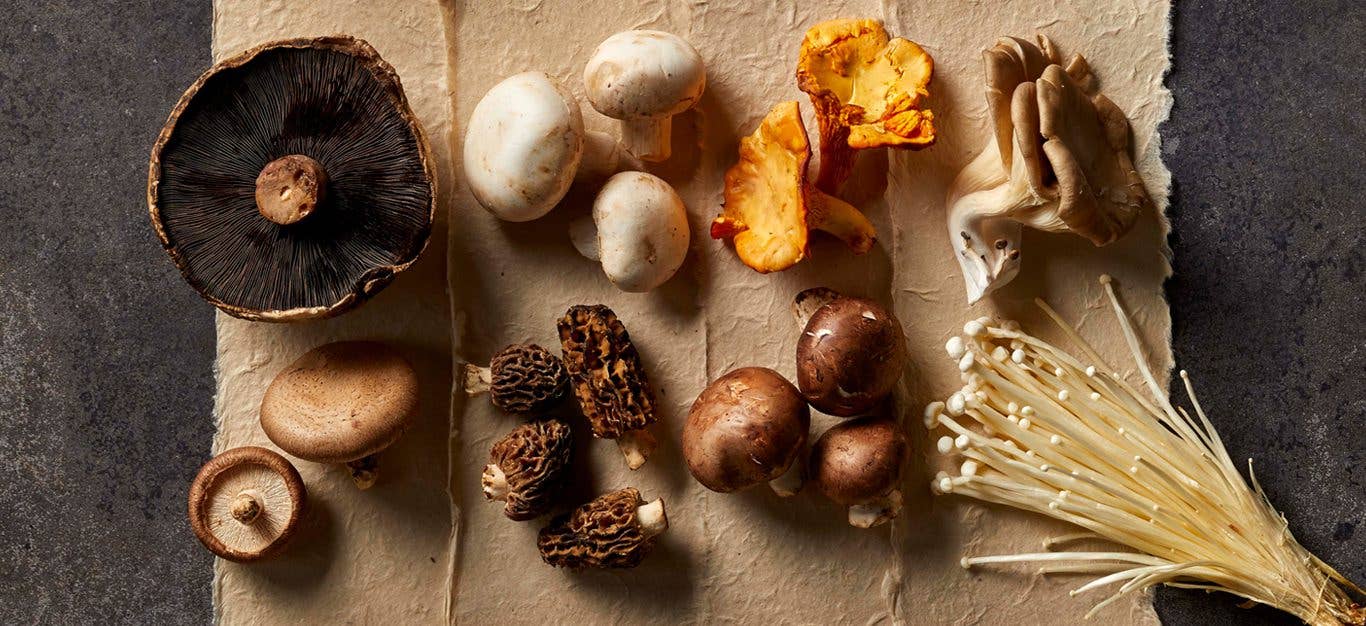Bite-size and super-sweet with edible skins and minimal seeds (or none at all), grapes are as close to fruit perfection as it gets. Read on to find out everything you need to know about selecting, storing, and cooking with the clusters of fruit that have been a worldwide favorite since ancient times.
Different Types of Grapes
Botanically speaking, each fruit on a cluster of grapes is a berry with seeds in the center. Seedless varietals are the result of a recent (and 100-percent natural) mutation that has been developed by growers to bring you the juicy, pipless bunches available year-round.
Grapes are classified into three different types: wine grapes, which are grown specifically to be fermented into wine; juice grapes with thick, slip-off skins; and sweet, thin-skinned table grapes. Below are some common kinds.
Green Seedless
Also called white grapes, green seedless grapes have medium-size fruit with colors that range from pale green to golden amber. Thompson seedless is the most common and most popular variety, which is also used to make raisins. Cotton Candy grapes, which are extremely sweet and virtually free of tartness, are another variety of green seedless grapes.
Red Seedless
With bright red names such as Flame, Crimson, and Cardinal, red seedless grapes have a muted, rosy hue. Most are later-season varieties that reach their peak in late fall.
Black/Purple Seedless
Intensely sweet, juicy black or purple seedless grape varieties are often larger and rounder than green and red seedless grapes. Look for giant, globe-shaped Autumn Royal grapes later in the growing season, from October through December.
Champagne/Corinth/Zante Currant Grapes
Mini clusters of tiny Corinth grapes are often marketed as “Champagne” grapes—even though they aren’t the varietal that goes into bottles of bubbly. The short-season, seedless fruits do have another use, however; they’re dried to make currants, a small raisin that’s packed with flavor.
Muscat
Ultra-fragrant muscat grapes are a green-gold Italian variety that’s hugely popular in Europe and is gaining fans in North America. Muscat grapes are highly seasonal and can be found in early to late fall.
Concord
The all-American juice and jelly grapes are round with blue-black, slightly sour skins that slip easily off the flesh. Concord grapes were developed from wild North American grapes in the 19th century by a grower in Concord, Massachusetts, and are now grown all across North America. They reach peak ripeness in early fall.
Muscadine and Scuppernong
Green-gold muscadine and dusky scuppernong are two muscadine grapes that are native to the American South. Their availability is limited to late summer and early fall.
Selection and Storage
When choosing table grapes, the darker the color, the sweeter the flavor. Look for bunches with tight clusters of grapes that cling firmly to green, pliable stems. If there are a lot of loose grapes, or if the stems are brown and woody, they’ve likely been in transit or storage for a long time (though they still may be good).
A whitish bloom on the fruit’s skin is common on really fresh grapes. The powdery substance is a wax the fruit produces naturally to protect itself.
For optimum freshness, always refrigerate grapes as soon as you bring them home. Unwashed grapes stored in a paper or mesh bag will stay plump and juicy for up to two weeks. Rinse grapes right before you eat/use them so they retain their protective bloom and are not exposed to excess moisture in storage.
Seasonality
All year long, you’ll find grapes front and center in the supermarket produce section. From May to January, they’re likely to come from California, which grows 99 percent of the table grapes in North America. The rest of the year, seedless grapes are imported from South America, Mexico, and South Africa to meet customer demand. The United States imports more grapes than any other country.
Specialty grapes (Champagne, muscat) and heirloom varieties (muscadine, Concord) have shorter seasons that run from the end of the summer to the first frosts of late fall.
Our Favorite Grape Recipes
Sweeten your day with one of these easy and delicious grape recipes from Forks Over Knives.
For more guidance in healthy cooking, check out Forks Meal Planner, FOK’s easy weekly meal-planning tool to keep you on a plant-based path. To learn more about a whole-food, plant-based diet, visit our Plant-Based Primer.
Related News
Try Our Top-RatedMeal Planner Free

Forks Meal Planner takes the hard work out of making nutritious meals the whole family will enjoy.
SAVE $200 ON OUR ULTIMATE COURSE

Join our best-selling course at a new lower price!





